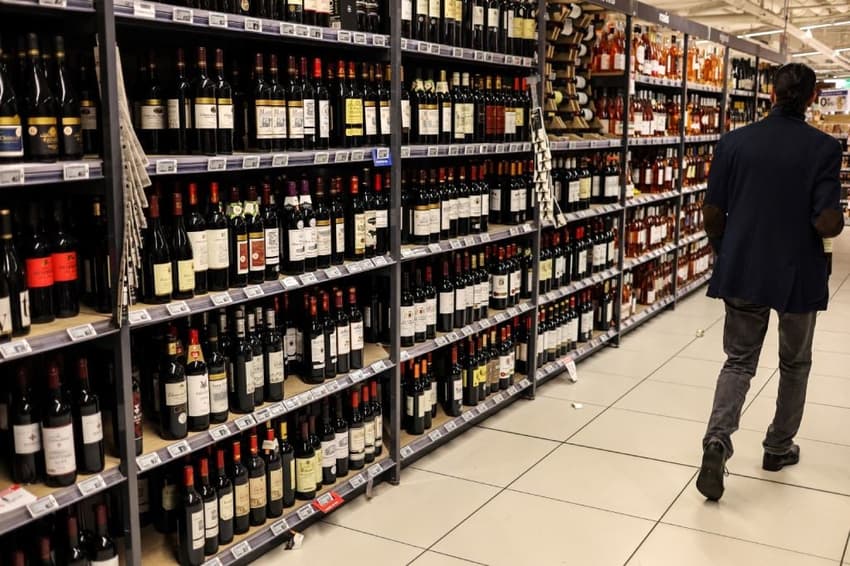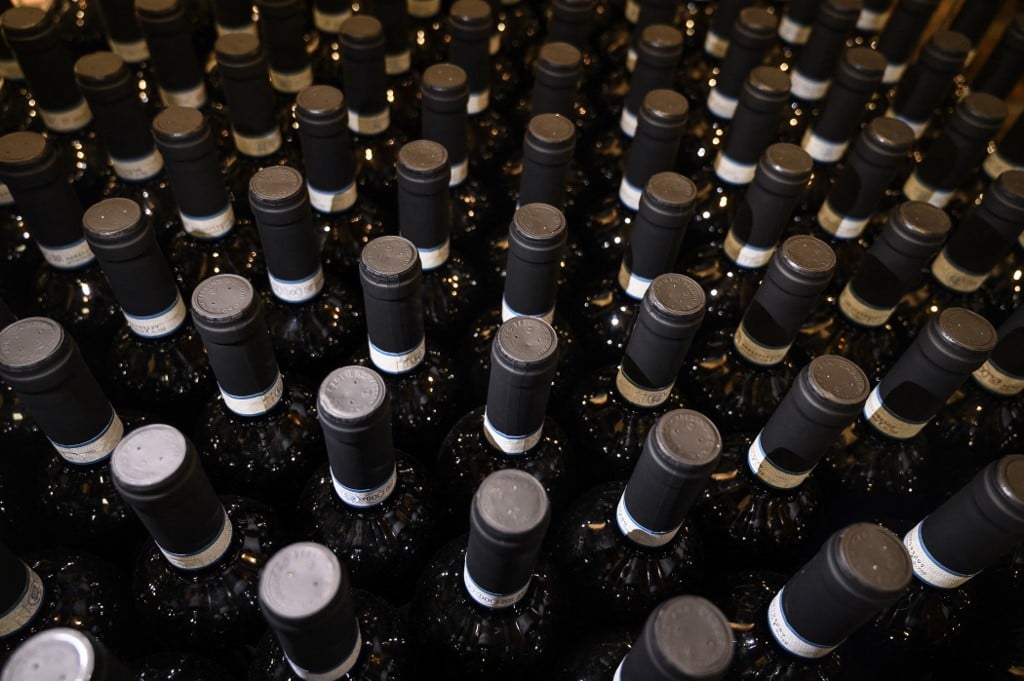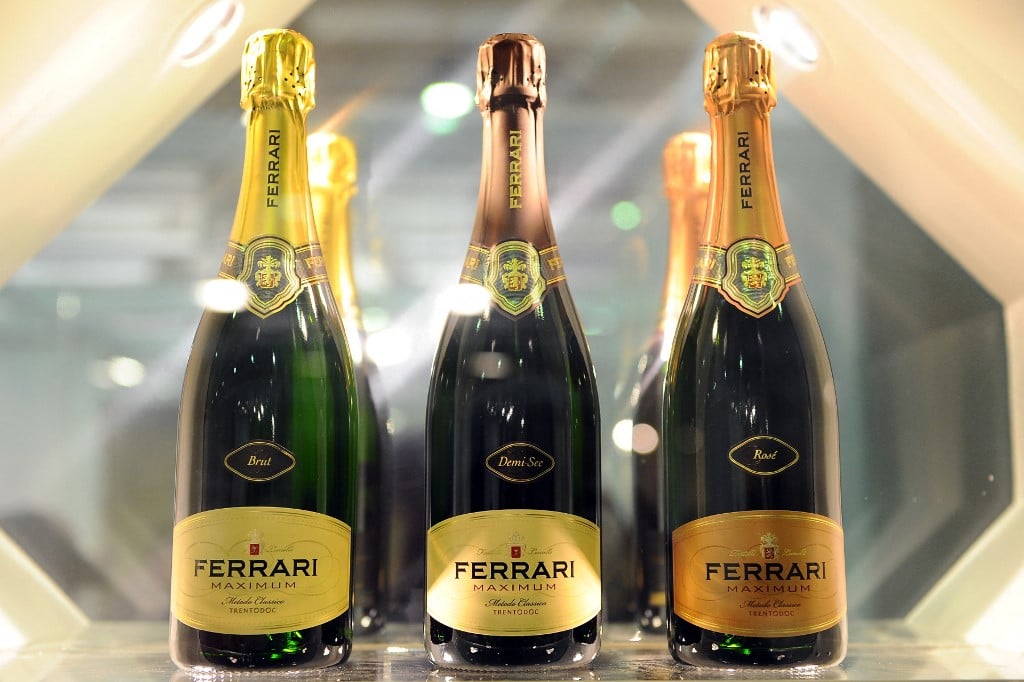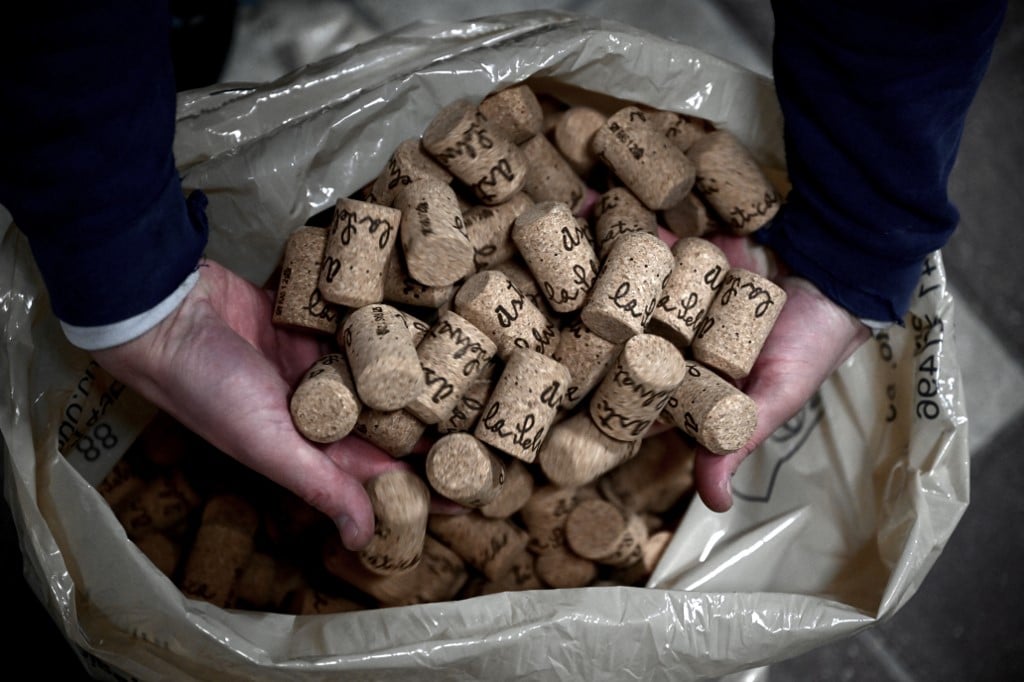How to choose the best wine in Italian supermarkets

Italian supermarkets offer a wide range of wines, but not all are as good as you might hope. Here’s how to pick the best affordable bottles.
Italy is known for being home to excellent winemakers, producing some of the best bianchi, rossi and spumanti in the entire world. But does that mean that the shelves of all Italian supermarkets are chock-full of top-quality wine? Well, no.
Like most supermarkets in the world, Italian businesses have to cater to a wide range of consumer needs and, above all, they need to maximise their profits.
As such, their shelves have a pretty wide spectrum of wines, from low-quality to high, and being able to tell the former from the latter usually takes some insider knowledge.
With the help of enologist Carlo Peretti, The Local has put together some advice to help you pick the right bottle off the shelf.
Enoteca v Supermarket
Firstly, if you’re looking to buy a top-notch bottle of wine for an important social occasion, experts say you should always try to do your shopping at your local wine shop (or enoteca).
That’s because, in the words of Peretti, enoteche “are much more selective [than large-scale retailers]” and “it’s very unlikely that they might keep low-quality wines on their shelves”.
But if you’re looking for a good, affordable bottle with your weekly supermarket shop, here’s how you can have a successful wine-shopping expedition.
What’s the right price?
The first thing that shoppers should be mindful of is the price of the bottles they come across.
Peretti says: “I would advise people to never spend less than five euros on a bottle. Wine is a product that requires a lot of hard work and expenses (water, electricity, machinery, transport, operating costs, etc.), so it’s practically impossible to get a decent product by spending less than five euros.”
To sum up, anything under that threshold is likely to be what Italians love to call ‘acqua sporca’ (dirty water), i.e. a mediocre type of wine. So, aim to spend at least five euros for reds and whites, and at least seven euros for sparkling wines.
Buy local wine
Aside from supporting local winemakers, buying wine that was produced in the region you happen to live in (or be visiting) comes with a couple of remarkable upsides.
Firstly, Peretti says, “the closer the winemaker, the cheaper the transport, so the items that end up on the supermarket shelves have a higher value for money”.
Secondly, it is often the case that “supermarkets have solid business relationships with local winemakers and, as such, the wines they put on the shelves are generally of good quality”.
But, how can you know that the bottle standing right in front of you has been produced in your region? It will suffice to look at the back label (controetichetta), which carries info on where the wine was produced and bottled.

As a rule of thumb, shoppers should only consider buying bottles of red wine with a vintage falling within three years of the purchase date. Photo by Marco BERTORELLO / AFP
Check out the wine’s vintage (or disgorgement date for sparkling wines)
One of supermarket wine’s biggest problems is conservation, with temperature swings and light accelerating the degradation of the product’s flavour and aromas.
So, as a rule of thumb, Peretti recommends consumers avoid “white wines with a vintage dated over two years prior to the purchase date” and “red wines with a vintage dated three or more years before the purchase date”.
This means that, if you’re looking to buy a white wine now, you should only look at bottles from either 2023 or 2022, whereas, if you’re looking to buy a red wine, you should only consider bottles from 2021 onwards.
Once again, information on a bottle’s vintage (or anno di vendemmia) can be found on the bottle itself, usually in the controetichetta.
When it comes to sparkling wines, the rules of the game change slightly as shoppers should look for the disgorgement date (data di sboccatura), that is when bottles are closed for the last time and the classic mushroom-shaped cork stopper is put into place.
The disgorgement date is not always included in the bottle’s back label, but, if it is, “make sure that the sboccatura happened within a maximum of 18 months from when the wine is being purchased”.
Pay attention to the wine classifications
There are three main wine classifications in Italy: IGT, DOC and DOCG. By law, they all need to appear on the bottle’s label.
IGT is the broadest possible category. At least 85 percent of the grapes used in IGT wines should come from the IGT region stated on the label. Other than that, winemakers don’t have to conform to strict production standards.
DOC is the second-best quality label. All winemakers have to abide by strict production standards and subject their products to a number of rigorous quality tests. All grapes should come from the designated DOC geographical area.
DOCG is the highest quality level. Harvesting must be made manually and all grapes must come from restricted geographical areas known for the excellence of their vineyards.
“When buying wine, look for DOCG, DOC or IGT, in this order,” says Peretti. “Anything falling outside of these classifications, feel free to avoid.”

Very rarely does a good bottle of sparkling wine cost less than seven euros. Ferrari, pictured above, is one of the best Italian ‘spumanti’. Photo by Vincenzo PINTO / AFP
Try to buy wine that’s been produced and bottled by the same company
If you find ‘Imbottigliato all’origine da’ or ‘Prodotto e imbottigliato da’ on a bottle’s back label, that means that the entire production process (harvesting, winemaking and bottling) was controlled by one single company.
This can be a quality marker as it means that at no point in the process has the wine in question been handed over to third parties. However, Peretti says “while it can be a quality marker, it is not as crucial a factor as some may think”.
He says: “Granted, bottling a specific product away from the location where it was actually produced might subject that product to a certain degree of ‘stress’, which might affect its final quality.”
“However,” he adds, “if the wine is transported in accordance with the latest industry guidelines and in the most appropriate possible manner, the product should not be compromised”.
Steer clear of discounts and ‘incredible’ deals
As appealing as they might look, offers are generally marketing techniques aimed at ridding the shelves of old, unsold wine.
So, Peretti warns, before pouncing on such deals, “shoppers should look at the vintage of the bottles included in the deal” and generally resort to their common sense.
He adds: “An eight-euro bottle of Brunello di Montalcino with a 50-percent discount? It seems fishy. I don’t really think a good Brunello can be sold at eight euros, let alone four.”

Shoppers should beware of bottles carrying synthetic cork stoppers. This (above) is what natural corks should look like. Photo by Marco BERTORELLO / AFP
How to spot a bad bottle
Believe it or not, even Italian supermarket shelves can be home to some first-rate slop. So how can you quickly spot bad bottles? Here are some quick tips from our wine expert.
- Avoid cardboard boxes at all costs, unless you need wine for cooking purposes.
- Screw caps are okay as long as they’re used on bottles of white wine.
- Avoid bottles with synthetic cork stoppers as they’re generally used for cheap, low-quality wine.
- Beware of bottles with cheap plastic stickers for labels as they might contain low-quality wine. Look for bottles with paper labels and feel them with your hands. The coarser they are, the better.
- Beware of light bottles, especially for sparkling wines, which need relatively thick, heavy bottles for pressurisation purposes.
- Beware of clear, see-through bottles when it comes to white wines. They look nice and allow shoppers to see the colour of the product but do a poor job of protecting the wine from natural or artificial light. This can lead to defects in flavour and aromas.
Comments (5)
See Also
Italy is known for being home to excellent winemakers, producing some of the best bianchi, rossi and spumanti in the entire world. But does that mean that the shelves of all Italian supermarkets are chock-full of top-quality wine? Well, no.
Like most supermarkets in the world, Italian businesses have to cater to a wide range of consumer needs and, above all, they need to maximise their profits.
As such, their shelves have a pretty wide spectrum of wines, from low-quality to high, and being able to tell the former from the latter usually takes some insider knowledge.
With the help of enologist Carlo Peretti, The Local has put together some advice to help you pick the right bottle off the shelf.
Enoteca v Supermarket
Firstly, if you’re looking to buy a top-notch bottle of wine for an important social occasion, experts say you should always try to do your shopping at your local wine shop (or enoteca).
That’s because, in the words of Peretti, enoteche “are much more selective [than large-scale retailers]” and “it’s very unlikely that they might keep low-quality wines on their shelves”.
But if you’re looking for a good, affordable bottle with your weekly supermarket shop, here’s how you can have a successful wine-shopping expedition.
What’s the right price?
The first thing that shoppers should be mindful of is the price of the bottles they come across.
Peretti says: “I would advise people to never spend less than five euros on a bottle. Wine is a product that requires a lot of hard work and expenses (water, electricity, machinery, transport, operating costs, etc.), so it’s practically impossible to get a decent product by spending less than five euros.”
To sum up, anything under that threshold is likely to be what Italians love to call ‘acqua sporca’ (dirty water), i.e. a mediocre type of wine. So, aim to spend at least five euros for reds and whites, and at least seven euros for sparkling wines.
Buy local wine
Aside from supporting local winemakers, buying wine that was produced in the region you happen to live in (or be visiting) comes with a couple of remarkable upsides.
Firstly, Peretti says, “the closer the winemaker, the cheaper the transport, so the items that end up on the supermarket shelves have a higher value for money”.
Secondly, it is often the case that “supermarkets have solid business relationships with local winemakers and, as such, the wines they put on the shelves are generally of good quality”.
But, how can you know that the bottle standing right in front of you has been produced in your region? It will suffice to look at the back label (controetichetta), which carries info on where the wine was produced and bottled.

Check out the wine’s vintage (or disgorgement date for sparkling wines)
One of supermarket wine’s biggest problems is conservation, with temperature swings and light accelerating the degradation of the product’s flavour and aromas.
So, as a rule of thumb, Peretti recommends consumers avoid “white wines with a vintage dated over two years prior to the purchase date” and “red wines with a vintage dated three or more years before the purchase date”.
This means that, if you’re looking to buy a white wine now, you should only look at bottles from either 2023 or 2022, whereas, if you’re looking to buy a red wine, you should only consider bottles from 2021 onwards.
Once again, information on a bottle’s vintage (or anno di vendemmia) can be found on the bottle itself, usually in the controetichetta.
When it comes to sparkling wines, the rules of the game change slightly as shoppers should look for the disgorgement date (data di sboccatura), that is when bottles are closed for the last time and the classic mushroom-shaped cork stopper is put into place.
The disgorgement date is not always included in the bottle’s back label, but, if it is, “make sure that the sboccatura happened within a maximum of 18 months from when the wine is being purchased”.
Pay attention to the wine classifications
There are three main wine classifications in Italy: IGT, DOC and DOCG. By law, they all need to appear on the bottle’s label.
IGT is the broadest possible category. At least 85 percent of the grapes used in IGT wines should come from the IGT region stated on the label. Other than that, winemakers don’t have to conform to strict production standards.
DOC is the second-best quality label. All winemakers have to abide by strict production standards and subject their products to a number of rigorous quality tests. All grapes should come from the designated DOC geographical area.
DOCG is the highest quality level. Harvesting must be made manually and all grapes must come from restricted geographical areas known for the excellence of their vineyards.
“When buying wine, look for DOCG, DOC or IGT, in this order,” says Peretti. “Anything falling outside of these classifications, feel free to avoid.”

Try to buy wine that’s been produced and bottled by the same company
If you find ‘Imbottigliato all’origine da’ or ‘Prodotto e imbottigliato da’ on a bottle’s back label, that means that the entire production process (harvesting, winemaking and bottling) was controlled by one single company.
This can be a quality marker as it means that at no point in the process has the wine in question been handed over to third parties. However, Peretti says “while it can be a quality marker, it is not as crucial a factor as some may think”.
He says: “Granted, bottling a specific product away from the location where it was actually produced might subject that product to a certain degree of ‘stress’, which might affect its final quality.”
“However,” he adds, “if the wine is transported in accordance with the latest industry guidelines and in the most appropriate possible manner, the product should not be compromised”.
Steer clear of discounts and ‘incredible’ deals
As appealing as they might look, offers are generally marketing techniques aimed at ridding the shelves of old, unsold wine.
So, Peretti warns, before pouncing on such deals, “shoppers should look at the vintage of the bottles included in the deal” and generally resort to their common sense.
He adds: “An eight-euro bottle of Brunello di Montalcino with a 50-percent discount? It seems fishy. I don’t really think a good Brunello can be sold at eight euros, let alone four.”

How to spot a bad bottle
Believe it or not, even Italian supermarket shelves can be home to some first-rate slop. So how can you quickly spot bad bottles? Here are some quick tips from our wine expert.
- Avoid cardboard boxes at all costs, unless you need wine for cooking purposes.
- Screw caps are okay as long as they’re used on bottles of white wine.
- Avoid bottles with synthetic cork stoppers as they’re generally used for cheap, low-quality wine.
- Beware of bottles with cheap plastic stickers for labels as they might contain low-quality wine. Look for bottles with paper labels and feel them with your hands. The coarser they are, the better.
- Beware of light bottles, especially for sparkling wines, which need relatively thick, heavy bottles for pressurisation purposes.
- Beware of clear, see-through bottles when it comes to white wines. They look nice and allow shoppers to see the colour of the product but do a poor job of protecting the wine from natural or artificial light. This can lead to defects in flavour and aromas.
Join the conversation in our comments section below. Share your own views and experience and if you have a question or suggestion for our journalists then email us at [email protected].
Please keep comments civil, constructive and on topic – and make sure to read our terms of use before getting involved.
Please log in here to leave a comment.